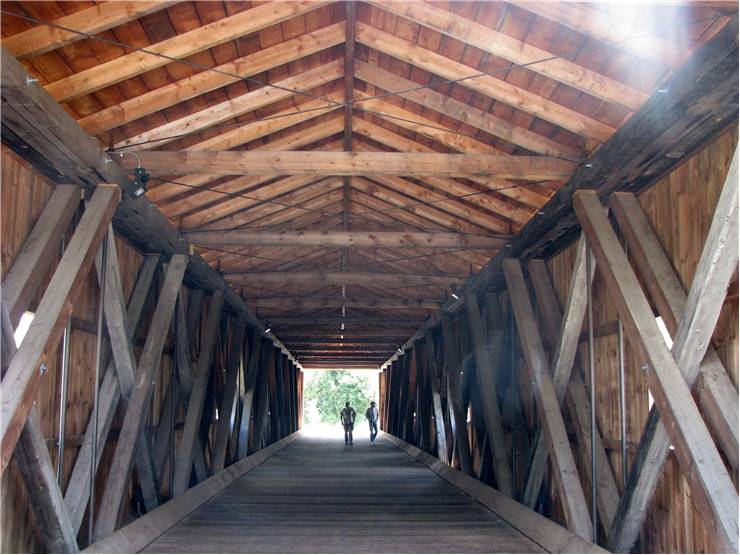Howe Truss Bridge Design
Howe truss is a type of bridge design that was introduced by an American architect William Howe.
It utilizes similar design such as Pratt truss, but with a strong difference. Here the diagonal structural beams slope toward the bridge center, while Pratt truss utilizes diagonal beams that slope outward from the center of the bridge. This approach makes diagonal members of Howe truss bridge in compression, while vertical web members are in tension.
William Howe was born in Spencer, Massachusetts, on May 12, 1803. After working as an apprentice in his father’s sawmill, he enrolled and graduated as an engineer at Leicester Academy in Leicester, Massachusetts. After several years of buildings homes and churches, in 1840 he managed to finally focus on his dream projects – building bridges. That same year he designed his first railroad bridge over the Connecticut River utilizing never before seen truss design that he devised. This Howe Design was purchased by his employer Amasa Stone for exclusive use in New England, where he created hundreds of bridges with this design approach.
Howe made numerous smaller improvements to his design and patented them under new Howe Truss design in 1846.
William Howe died suffering wounds from carriage accident on September 19, 1852.
In some form, two of William Howe’s bridges remain today:
Jay Bridge - A wood covered bridge on the east branch of the Ausable River in Jay, Essex County, New York, USA. The original bridge was destroyed in a severe flood in 1856, but it was rebuilt next year using Howe truss design. The bridge got damaged once again in 1953. Today it is used only by pedestrians and cyclists.
Sandy Creek Covered Bridge – This bridge spanning 22.7 meters is of the three surviving original Howe Truss bridges that are still in use in the state of Missouri. It was constructed in 1872, partially destroyed by high waters in 1886, and restored quickly after. Sandy Creek Covered Bridge was added to the National Register of Historic Places in 1970.

